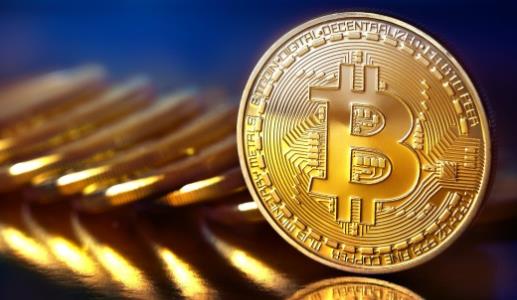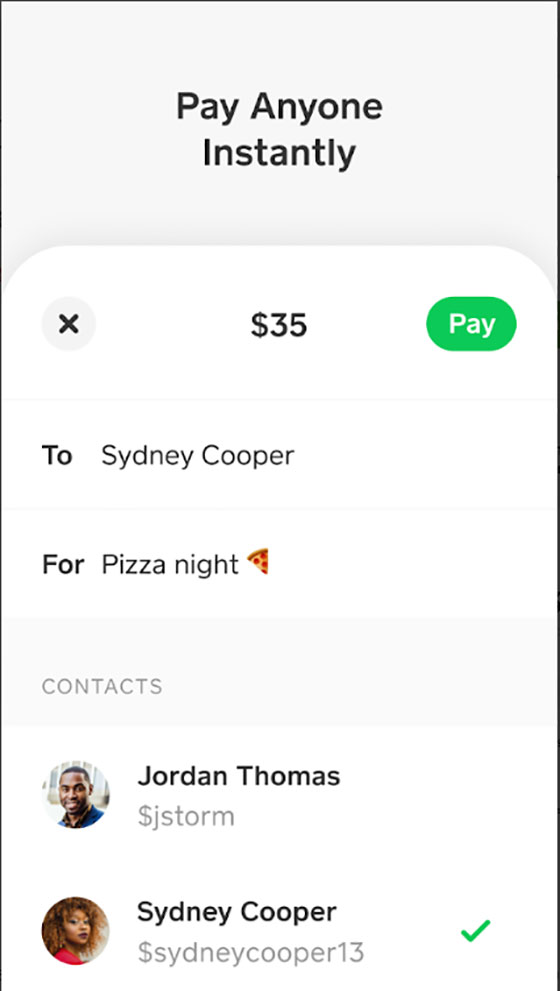Editor’s NOTE: Readers – I know that in time it will be here – not more printing or minting of US “money.” THIS is how THEY are going to control us. I have been warning our readers and listeners of this for a quarter of a century, but then… Who the hell am I? BUT I will fight this until the end. I am not in favor of ANY of it! ~ JB

Thanks to COVID-19, many of us have been working remotely, wearing masks when we go out, and paying for grocery delivery services. And we’ve been staying connected with loved ones using videoconferencing programs like Zoom…
And while I think the virus itself will be in the rearview mirror by this time next year, COVID-19 will continue to have an impact on the way we live.
Videoconferencing is here to stay. So are online grocery deliveries. And there’s one more important area of our lives that will be permanently changed.
No More Dirty Money
Since the outbreak of COVID-19, consumers and businesses have been shunning physical money.
People don’t want to handle paper bills and coins that may have come into contact with someone who has COVID-19. In fact, some businesses have refused cash payments during the COVID-19 pandemic due to fear of the virus.
The Federal Reserve even began quarantining U.S. dollars returning to the country from Europe and Asia for up to 10 days to help prevent the spread of the virus.
And that’s been a boon for person-to-person (P2P) payment transfers. Square’s Cash App, for instance, saw gross profits grow 115% year-over-year in Q1. That’s amazing growth. Estimates suggest that the app now has more than 30 million monthly active users.
This makes perfect sense. The app cuts out the middleman. It allows consumers to send money directly to someone by simply pressing a button on their smartphones.

Square Cash App (Source: Square)
And Square said it’s seen a spike in direct deposits into the Cash App. That means more consumers are choosing to have their paychecks deposited into the Cash App rather than into a traditional bank account.
To me, this is a clear sign that we are quickly moving toward peer-to-peer “contactless” payment systems. If consumers can save, invest, and buy goods and services through the Cash App, what’s the point of having a bank account?
This is providing a seamless transition to the world of digital wallets and peer-to-peer payments.
But it won’t just be how we transfer money that will change. Money as we know it is about to undergo a major transition.
The U.S. Digital Dollar
Buried in an early draft of the coronavirus stimulus bill was an outline for creating a “digital dollar” and “digital dollar wallets.”
The digital dollar idea was eventually scrapped in the final bill. But make no mistake, a digital U.S. dollar is coming.
In November of last year, the Federal Reserve wrote an open letter to policymakers. Fed Chair Jerome Powell said the Fed was “[analyzing] the costs and benefits of pursuing a [digital currency] in the U.S.”
And that was before the outbreak of COVID-19 in the U.S. The benefits of such a program now are clear to policymakers.
For instance, stimulus checks could be deposited directly into our digital wallets. No more waiting weeks for a physical check.
The same goes for small businesses that applied for emergency loans through the Paycheck Protection Program (PPP). No more waiting weeks for the funds to go from the Treasury Department… to the bank headquarters… to the local bank where the loan originated… and finally, to the business owner. Instead, funds could be deposited directly into digital wallets assigned to these businesses.
Policymakers are already aware of this idea. There is no doubt in my mind that digital currency is the future.
And some of the largest global corporations are already gearing up for this shift…
Visa – the largest credit card company and payment network in the world – recently filed a patent for a digital currency system.
The patent envisions a world where physical money is no longer in circulation. Instead, a central computer would manage the money supply and transactions of new digital currencies.
But before cryptocurrency enthusiasts start celebrating, know one thing. These state-issued currencies will be very different from cryptocurrencies like bitcoin.
Bitcoin vs. the U.S. Digital Dollar
Visa’s approach to how these currencies are managed is the exact opposite of what the blockchain industry wants.
Blockchain technology was designed to be used as a decentralized network. No one party has control. And a set of mathematical rules determines a digital asset’s monetary policy, not a central bank.
In contrast, Visa’s patent outlines a permissioned, centralized system that will keep the powers that be in full control of money.
We can bet this will be well-received by governments and central banks around the world. After all, this will allow governments to track and tax every single transaction. The IRS will have a field day.
This sort of system is already in operation in China, for example. The state-owned Agricultural Bank of China just released a test application for smartphones for the People’s Bank of China’s (PBOC) digital currency project. The country is already testing the consumer side of its central bank digital currency (CBDC).
The app will track all transactions. It also has digital currency exchange functionality built into it. It’s everything citizens would need to receive, store, exchange, and transact in the CBDC.
I believe China will release its official CBDC sometime this year.
If it’s successful, I suspect the U.S. won’t be far behind.
Removing paper money entirely from the system would “force” all consumers to transact on one single platform, using only a digital version of the U.S. dollar.
This is setting the stage for a major showdown between centralized currencies like a U.S. digital dollar and decentralized assets like bitcoin.
Will consumers happily adopt a U.S. digital dollar, where every transaction can be recorded? Or will they flock to a decentralized, anonymous asset like bitcoin?
Only time will tell.
But we shouldn’t be surprised when we walk into a store and see a sign: “We accept bitcoin or U.S. e-dollars.”
The currency revolution isn’t years away.
It’s already started.
Written by Jeff Brown and published at Steady Income Investments ~ June 13, 2020.









